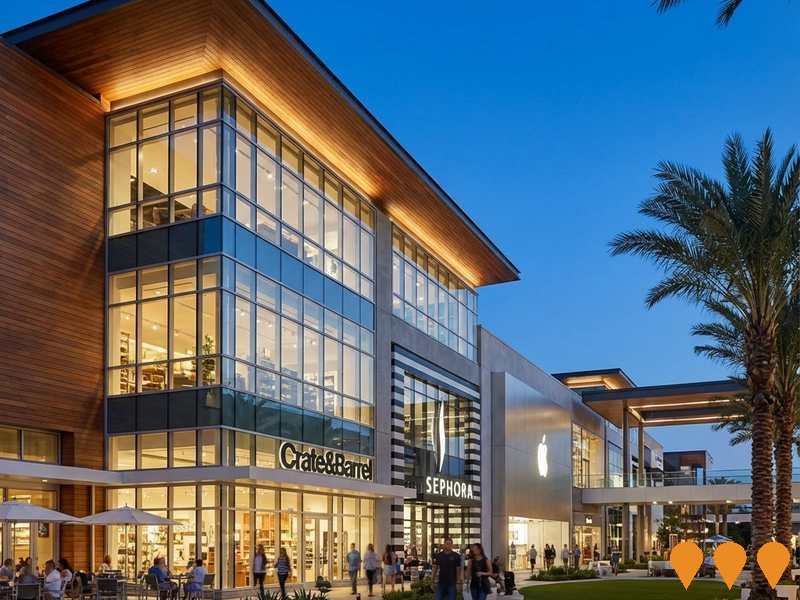Chart Color Schemes
est. as @ -- *
ABS ERP | -- people | --
2021 Census | -- people
Sales Activity
Curious about local property values? Filter the chart to assess the volume and appreciation (including resales) trends and regional comparisons, or scroll to the map below view this information at an individual property level.
Find a Recent Sale
Sales Detail
Population
Toongabbie - West lies within the top quartile of areas nationally for population growth performance according to AreaSearch analysis of recent, and medium to long-term trends
Toongabbie - West's population is approximately 12,389 as of August 2025. This figure represents an increase of 811 people, a 7.0% rise since the 2021 Census which recorded a population of 11,578. The change is inferred from the estimated resident population of 12,215 in June 2024 and an additional 215 validated new addresses since the Census date. This results in a population density ratio of 3,823 persons per square kilometer, placing Toongabbie - West in the top 10% of national locations assessed by AreaSearch, indicating high demand for land in the area. The area's 7.0% growth since the 2021 census surpassed both the SA3 area (3.9%) and the state level, positioning it as a growth leader in the region. Overseas migration contributed approximately 65.8% of overall population gains during recent periods, driving primary population growth for Toongabbie - West.
AreaSearch is adopting ABS/Geoscience Australia projections released in 2024 with a base year of 2022 for each SA2 area, and NSW State Government's SA2 level projections released in 2022 with a base year of 2021 for areas not covered by this data. Growth rates by age group from these aggregations are applied to all areas for years 2032 to 2041. Future population trends project an above median growth, with the area expected to grow by 1,724 persons to 2041 based on the latest population numbers, indicating a total increase of 12.5% over the 17 years.
Frequently Asked Questions - Population
Development
Residential development activity is slightly higher than average within Toongabbie - West when compared nationally
Toongabbie - West has received approximately 73 dwelling approvals per year over the past five financial years, totalling 369 homes. As of FY-26, 12 approvals have been recorded. Over these five years, an average of 2.3 new residents were gained for each dwelling built. The average construction cost value of new homes is $510,000.
In FY-26, there have been $240,000 in commercial approvals, indicating minimal commercial development activity compared to residential. Development levels per person in Toongabbie - West are similar to Greater Sydney, maintaining market equilibrium with surrounding areas. New developments consist of 51.0% detached houses and 49.0% townhouses or apartments, offering a mix of housing options across price brackets.
With around 466 people per dwelling approval, the area shows a developed market. Population forecasts indicate Toongabbie - West will gain approximately 1,550 residents by 2041. At current development rates, new housing supply should comfortably meet demand, providing good conditions for buyers and potentially supporting growth beyond current population projections.
Frequently Asked Questions - Development
Infrastructure
Toongabbie - West has very high levels of nearby infrastructure activity, ranking in the top 20% nationally
Changes to local infrastructure significantly impact an area's performance. AreaSearch has identified 17 projects that could affect the area. Notable ones include Toongabbie Bridge and Wentworth Avenue Upgrade, Metella Road Pavement Reconstruction, 135 Toongabbie Road Indoor Recreation Facility, and Westmead Health Precinct Redevelopment. The following list details those most likely to be relevant.
Professional plan users can use the search below to filter and access additional projects.
INFRASTRUCTURE SEARCH
 Denotes AI-based impression for illustrative purposes only, not to be taken as definitive under any circumstances. Please follow links and conduct other investigations from the project's source for actual imagery. Developers and project owners wishing us to use original imagery please Contact Us and we will do so.
Denotes AI-based impression for illustrative purposes only, not to be taken as definitive under any circumstances. Please follow links and conduct other investigations from the project's source for actual imagery. Developers and project owners wishing us to use original imagery please Contact Us and we will do so.
Frequently Asked Questions - Infrastructure
Westmead Health Precinct Redevelopment
Comprehensive redevelopment of the Westmead Health Precinct, creating one of the world's largest health, research, education, and training precincts. The project is part of a greater than $3.4 billion government and private sector commitment to the precinct. Key components include: Stage 1 (completed in 2021) with the Central Acute Services Building (CASB), new adult and children's emergency departments, and an Innovation Centre. Stage 2 of The Children's Hospital at Westmead Redevelopment (valued at $659 million and expected completion by 2025) includes the new 14-storey Paediatric Services Building (PSB) with critical care services, a multi-storey car park (opened 2024), and a revitalised 'KidsPark' forecourt. Other ongoing projects include an Integrated Mental Health Complex (expected completion 2027) and a Viral Vector Manufacturing Facility (VVMF, expected completion 2025).

Integrated Mental Health Complex Westmead
The new 10-storey Integrated Mental Health Complex (IMHC) at the Westmead Health Precinct is set to be the largest mental health facility in NSW. It will replace outdated facilities at Cumberland Hospital West Campus, integrating mental health services with Westmead Hospital via a link bridge. The facility will provide acute, sub-acute, and non-acute mental health beds for youth, adolescents, adults, and older persons, including units for eating disorders, intensive care, and multidisciplinary outpatient services. Construction is underway.
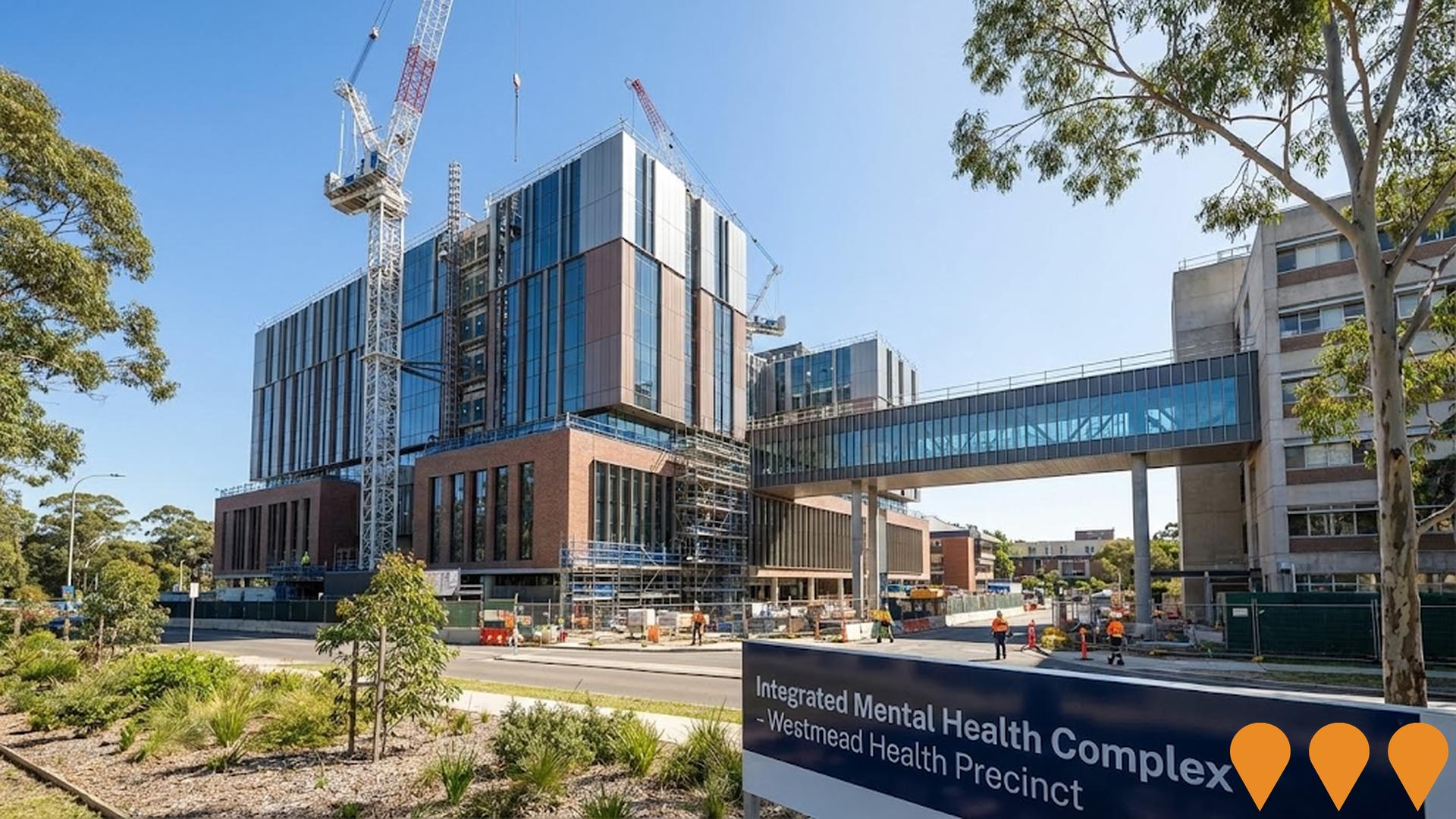
Station Road Datacentre Expansion (SYD08)
Microsoft's major datacentre project in Western Sydney featuring two buildings providing cloud infrastructure for local businesses, government, hospitals, and schools. Building One is complete and operational, Building Two construction has been substantially completed with facade and equipment installation finalized. The facility includes lithium-ion batteries and diesel backup generators, air handling units for cooling, and underground transmission feeders.

135 Toongabbie Road Indoor Recreation Facility
Demolition of existing structures and construction of a two storey indoor recreation facility including a swimming pool and school with at-grade car parking. DA2024/0646 was publicly exhibited from 13 Feb 2025 to 13 Mar 2025 and was refused by Council staff in July 2025 (see Determinations notice).
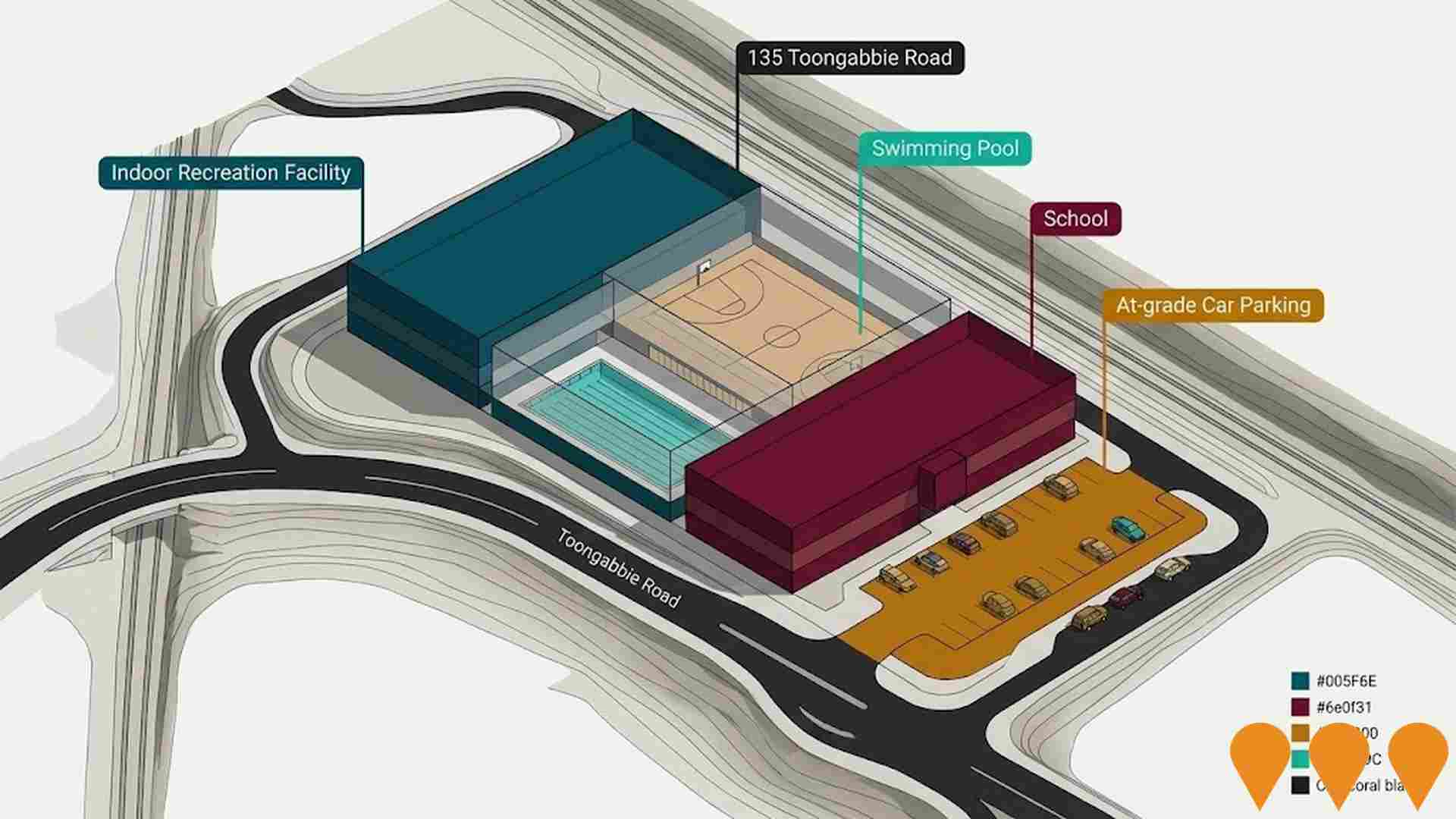
Seven Hills Plaza Ambience Upgrade
Comprehensive transformation of Seven Hills Plaza shopping centre to enhance the community shopping experience. The upgrade includes mall improvements in front of Woolworths, customer amenities upgrades including a new accessible bathroom in the food court, enhanced lighting and circulation, updated external signage and vehicle wayfinding, and modern internal wayfinding and mall furniture. The project aims to create a vibrant community hub for families and shoppers.
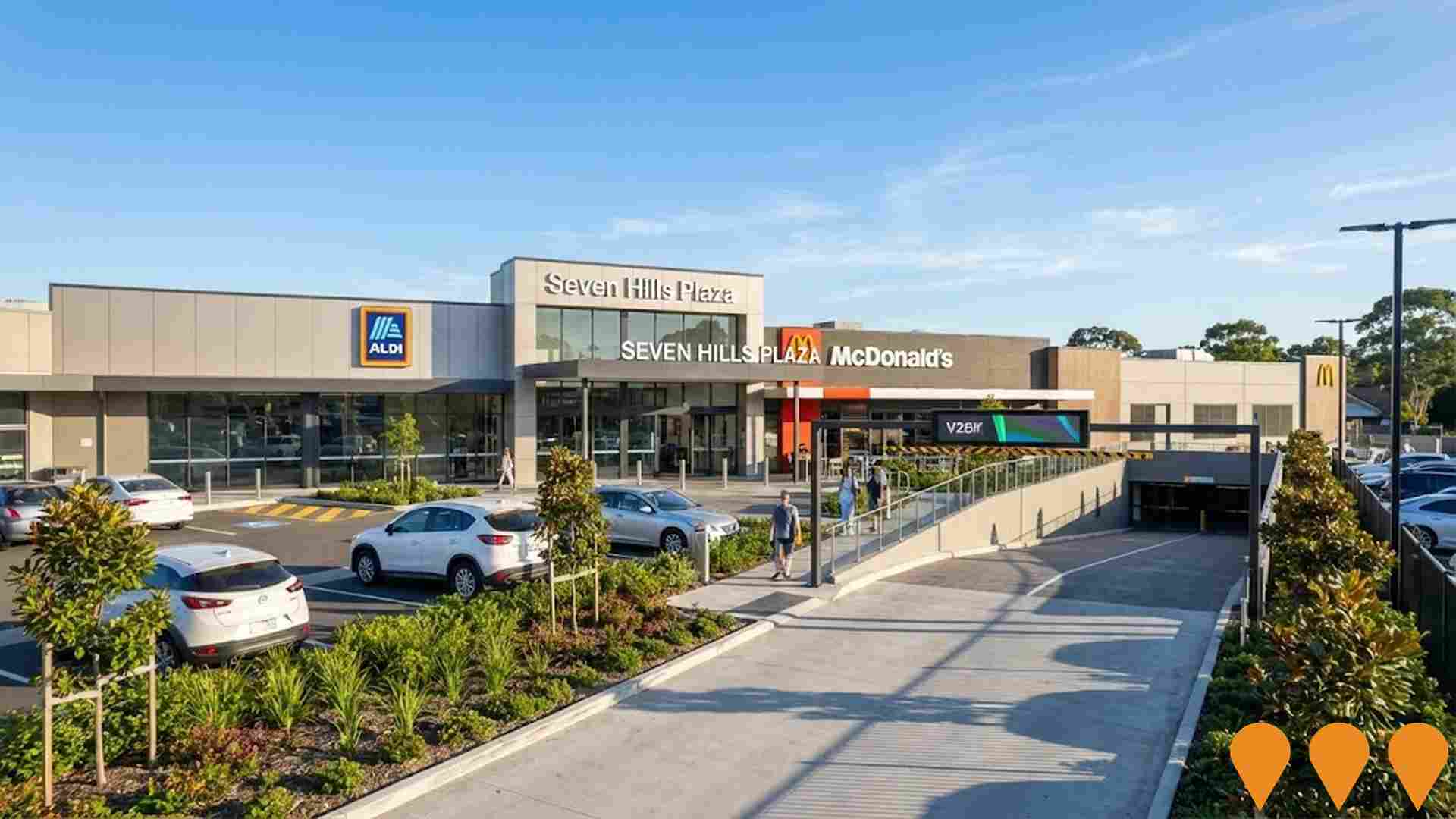
Seven Hills Community Hub (Betty Malthus Library)
A $35.8 million two-storey community hub featuring a state-of-the-art library (to be named Betty Malthus Library), study spaces, meeting and event rooms, recording studio, multi-use function room for up to 250 people, enclosed children's play area, public plaza, and over 45 parking spaces. The project aims to provide an inclusive environment for the community to meet, learn, work and play, incorporating sustainable design elements including hybrid CLT structure, green concrete, natural ventilation, water capture and PV power generation.
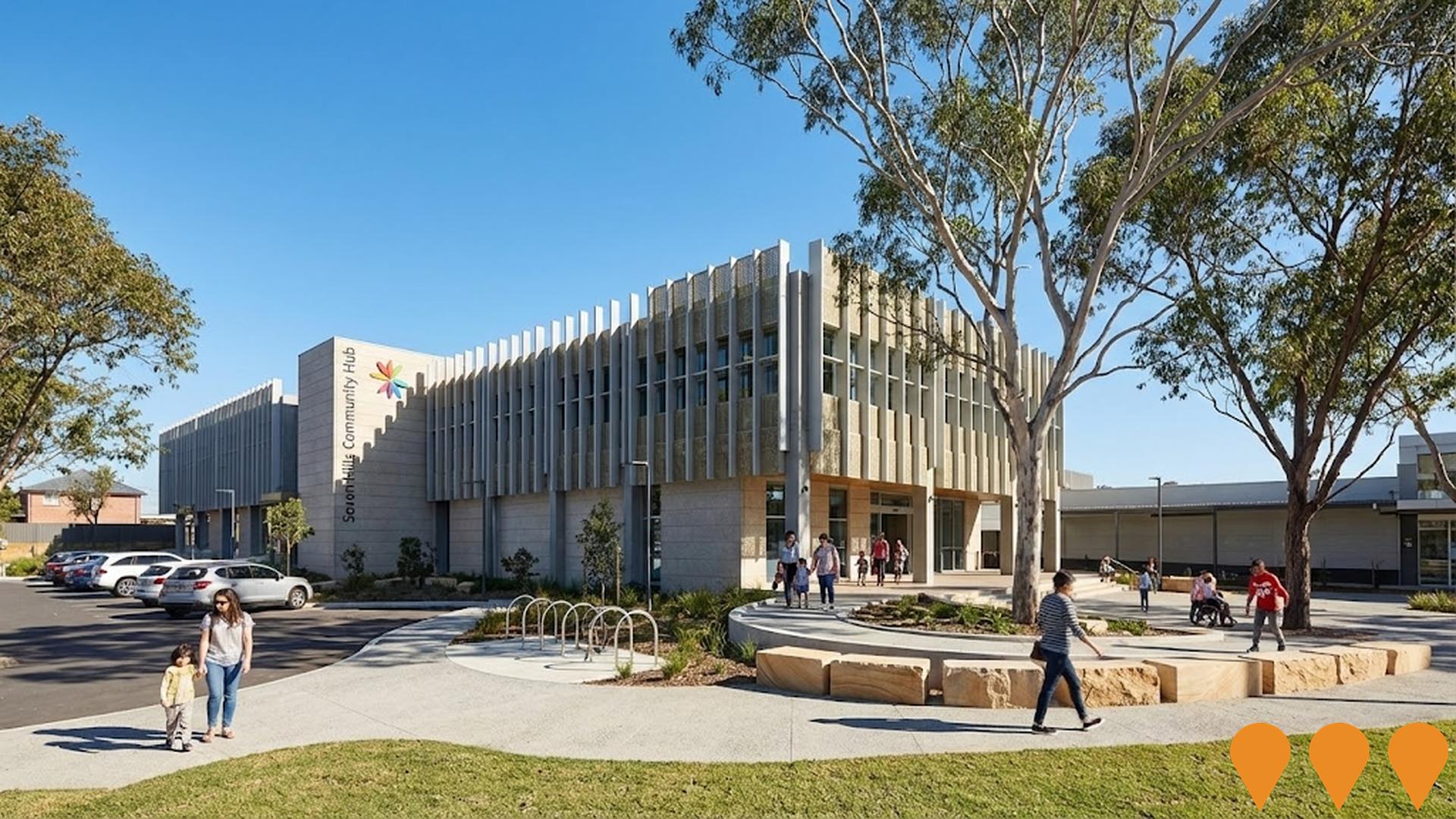
Toongabbie Bridge and Wentworth Avenue Upgrade
The Australian Government is investing $25 million to upgrade Wentworth Avenue and reduce congestion on the over 70-year-old Toongabbie Bridge. Upgrades include intersection upgrades and lane widening to improve traffic flow, productivity, and liveability in Western Sydney. Enabling works commenced in 2025.
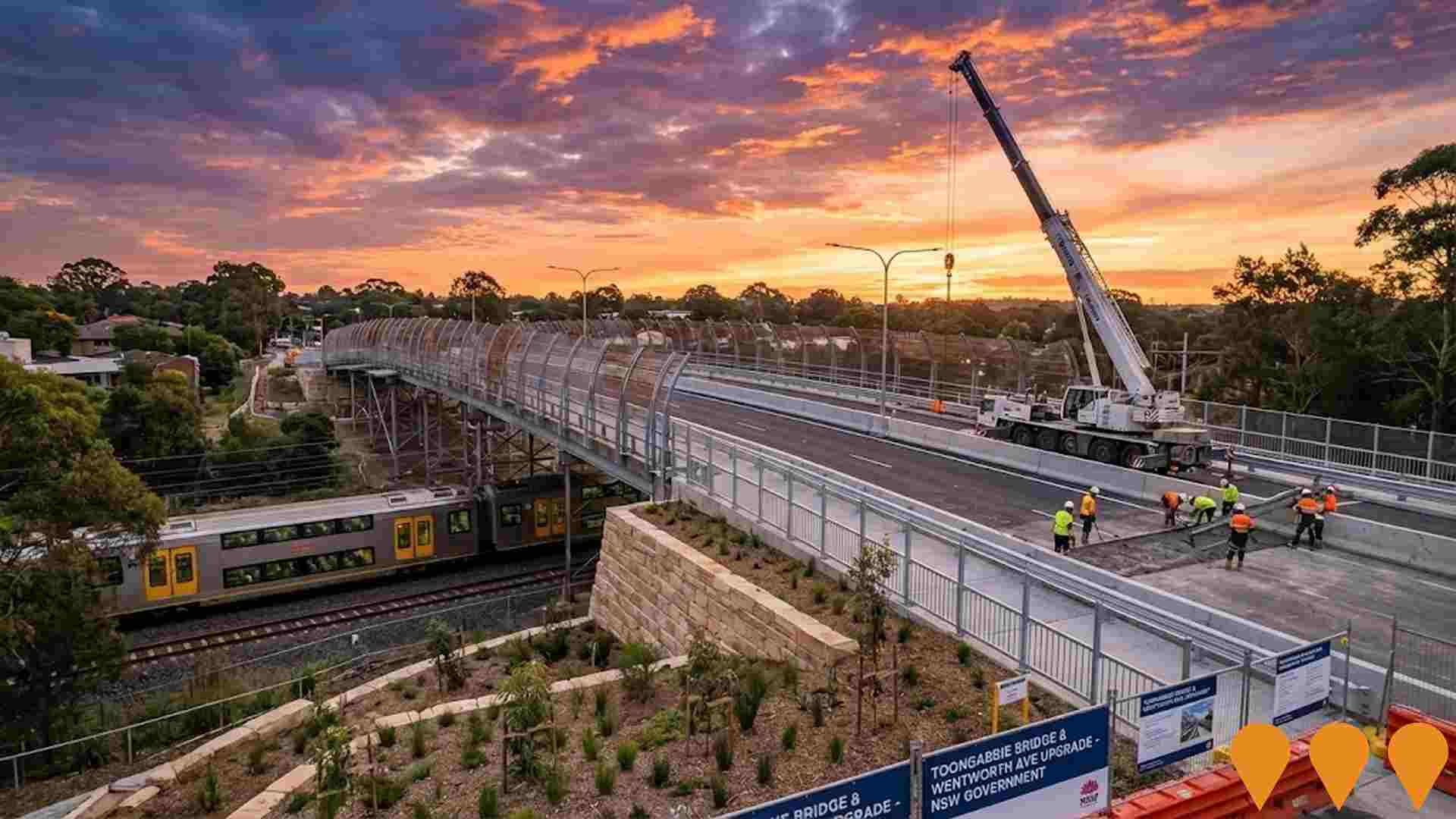
Toongabbie Town Centre Public Domain Plan
Public domain revitalization plan for Toongabbie town centre adopted by Cumberland Council on 21 August 2024. The plan guides delivery of consistently high-quality public realm including streetscape treatments, street furniture, landscaping and finishes. First stage of works will focus on improvements to Aurelia Street, Portico Park and Girraween Park. The plan supports place-based outcomes for creating healthy, creative, culturally rich and socially connected communities.
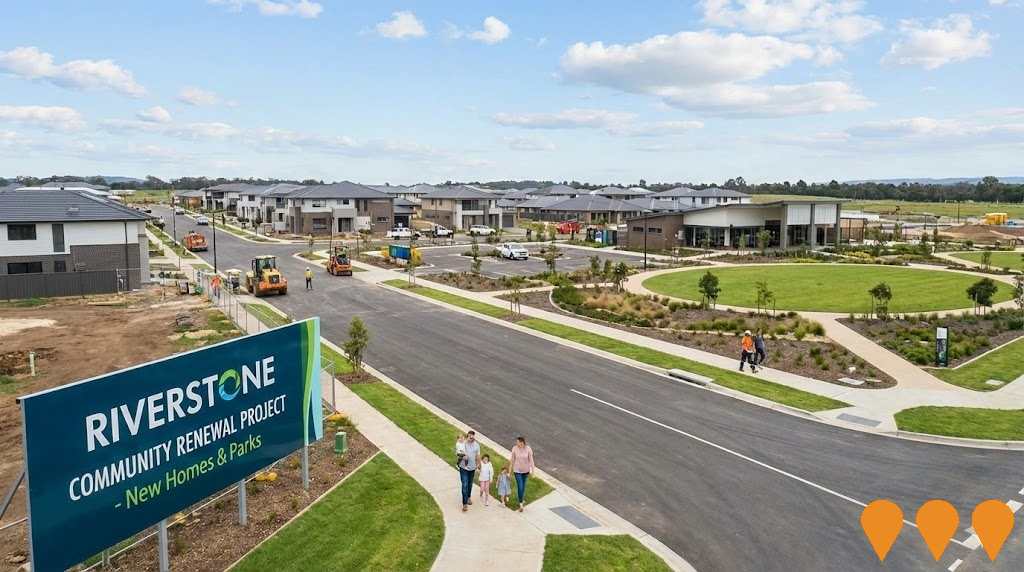
Employment
AreaSearch assessment positions Toongabbie - West ahead of most Australian regions for employment performance
Toongabbie - West has a highly educated workforce with professional services well represented. The unemployment rate was 3.7% as of June 2021.
Employment growth over the past year was estimated at 6.6%. As of June 2025, 6,917 residents were in work, with an unemployment rate of 3.7%, below Greater Sydney's rate of 4.2%. Workforce participation was on par with Greater Sydney's 60.0%. Key employment sectors for residents included health care & social assistance, professional & technical services, and retail trade.
The area had a particular specialization in transport, postal & warehousing, with an employment share 1.4 times the regional level. However, education & training showed lower representation at 7.2% compared to the regional average of 8.9%. Employment opportunities locally appeared limited, as indicated by Census data comparing working population and resident population. Between June 2024 and June 2025, employment levels increased by 6.6%, labour force grew by 6.5%, causing a fall in unemployment rate by 0.1 percentage points. In contrast, Greater Sydney experienced employment growth of 2.6% and labour force growth of 2.9%, with an increase in unemployment rate by 0.3 percentage points. National employment forecasts from Jobs and Skills Australia (May 2025) project national employment growth at 6.6% over five years and 13.7% over ten years, with varying rates across industry sectors. Applying these projections to Toongabbie - West's employment mix suggests local growth of approximately 6.8% over five years and 14.1% over ten years.
Frequently Asked Questions - Employment
Income
Income analysis reveals strong economic positioning, with the area outperforming 60% of locations assessed nationally by AreaSearch
AreaSearch's latest postcode level ATO data for financial year 2022 shows Toongabbie - West's median income among taxpayers is $54,047 with an average of $64,223. This aligns with national averages and compares to Greater Sydney's median of $56,994 and average of $80,856. Based on Wage Price Index growth of 12.61% since financial year 2022, current estimates as of September 2025 would be approximately $60,862 (median) and $72,322 (average). Census data reveals household, family and personal incomes in Toongabbie - West cluster around the 62nd percentile nationally. Distribution data shows the $1,500 - 2,999 earnings band captures 34.9% of the community (4,323 individuals), mirroring regional levels where 30.9% occupy this bracket. High housing costs consume 17.1% of income, placing disposable income at the 68th percentile and the area's SEIFA income ranking places it in the 6th decile.
Frequently Asked Questions - Income
Housing
Toongabbie - West displays a diverse mix of dwelling types, with ownership patterns similar to the broader region
Toongabbie - West's dwelling structures, as per the latest Census, consisted of 55.4% houses and 44.6% other dwellings (semi-detached, apartments, 'other' dwellings). This compares to Sydney metro's 76.8% houses and 23.3% other dwellings. Home ownership in Toongabbie - West was at 23.3%, with mortgaged dwellings at 39.5% and rented ones at 37.1%. The median monthly mortgage repayment in the area was $2,167, aligning with Sydney metro's average. Weekly rent figures were recorded at $420, compared to Sydney metro's $400. Nationally, Toongabbie - West's median monthly mortgage repayments were higher than the Australian average of $1,863, and rents were substantially above the national figure of $375.
Frequently Asked Questions - Housing
Household Composition
Toongabbie - West features high concentrations of family households and group households, with a fairly typical median household size
Family households comprise 78.1% of all households, including 43.9% couples with children, 21.2% couples without children, and 11.4% single parent families. Non-family households account for the remaining 21.9%, with lone person households at 17.8% and group households comprising 4.1%. The median household size is 2.9 people, which matches the Greater Sydney average.
Frequently Asked Questions - Households
Local Schools & Education
Toongabbie - West shows strong educational performance, ranking in the upper quartile nationally when assessed across multiple qualification and achievement indicators
Toongabbie-West has a higher proportion of residents aged 15 and above with university qualifications than the national average. As of 2021, 40.8% of its residents hold such qualifications compared to Australia's 30.4%. This is also higher than New South Wales' (NSW) average of 32.2%. Bachelor degrees are the most common at 24.4%, followed by postgraduate qualifications at 14.2% and graduate diplomas at 2.2%.
Vocational pathways account for 24.8% of qualifications among those aged 15 and above, with advanced diplomas making up 10.0% and certificates 14.8%. Educational participation is high in the area, with 31.6% of residents currently enrolled in formal education as of 2021. This includes 10.7% in primary education, 7.3% in secondary education, and 6.1% pursuing tertiary education. Two schools serve the educational needs of Toongabbie-West: Toongabbie Christian College and Metella Road Public School, with a combined student population of 1,880 as of 2021. The area demonstrates above-average socio-educational conditions, with an ICSEA score of 1094. The educational mix in the area includes one primary school and one K-12 school.
Frequently Asked Questions - Education
Schools Detail
Nearby Services & Amenities
Transport
Transport servicing is high compared to other areas nationally based on assessment of service frequency, route connectivity and accessibility
Toongabbie-West has 55 active public transport stops, serving a mix of train and bus routes. These stops are serviced by 37 individual routes, providing a total of 4,009 weekly passenger trips. The area's transport accessibility is rated excellent, with residents typically located 164 meters from the nearest stop.
On average, there are 572 trips per day across all routes, equating to approximately 72 weekly trips per individual stop.
Frequently Asked Questions - Transport
Transport Stops Detail
Health
Toongabbie - West's residents boast exceedingly positive health performance metrics with younger cohorts in particular seeing very low prevalence of common health conditions
Health outcomes data shows excellent results in Toongabbie - West, with younger age groups having particularly low prevalence rates for common health conditions. Private health cover rate is high at approximately 52% of the total population (~6,429 people), compared to Greater Sydney's average of 49.8%.
The most prevalent medical conditions are diabetes (6.0%) and asthma (5.9%). A majority, 77.0%, report no medical ailments, compared to 73.6% in Greater Sydney. The area has a higher proportion of residents aged 65 and over at 14.7% (1,821 people).
Frequently Asked Questions - Health
Cultural Diversity
Toongabbie - West is among the most culturally diverse areas in the country based on AreaSearch assessment of a range of language and cultural background related metrics
Toongabbie-West has a population where 59.7% speak languages other than English at home, with 54.9% born overseas. Christianity is the predominant religion, comprising 42.4%. Hinduism is notably higher at 30.0%, compared to Greater Sydney's average of 14.7%.
In terms of ancestry, 'Other' is the largest group at 26.6%, followed by Indian (17.4%), which is substantially higher than the regional average of 10.8%, and Australian (12.7%). Sri Lankan, Maltese, and Lebanese groups are overrepresented in Toongabbie-West compared to regional averages: Sri Lankan at 1.7% vs 0.7%, Maltese at 2.4% vs 1.9%, and Lebanese at 2.0% vs 1.8%.
Frequently Asked Questions - Diversity
Age
Toongabbie - West's population is younger than the national pattern
Toongabbie - West's median age is 35 years, which is slightly younger than Greater Sydney's 37 and the national average of 38 years. The 35-44 age group constitutes 18.4%, higher than Greater Sydney, while the 15-24 cohort makes up 10.8%. Between 2021 and now, the 75-84 age group has increased from 4.2% to 5.5%. Conversely, the 25-34 age group has decreased from 16.8% to 15.7%. By 2041, forecasts indicate significant demographic shifts in Toongabbie - West. The 55-64 cohort is projected to rise substantially by 578 people (53%), from 1,086 to 1,665. Conversely, population declines are forecast for the 5-14 and 0-4 age groups.


